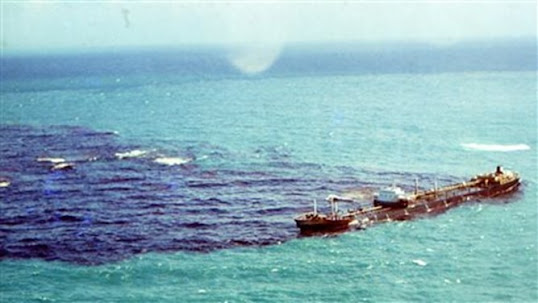As part of a network of response organizations, our SCAA members are fully engaged in the business of responding to, cleaning up, and mitigating pollution. Many changes have taken place over the years on how the U.S. responds to spills and new information and research will continue to help this industry evolve. In this reoccurring segment, we will take a historical look at how our response capabilities have evolved from the early 1900s to the present while highlighting and summarizing some of the most influential events and regulations that have taken place!
Torrey Canyon Spill – March 18, 1967
The SS Torrey Canyon Oil Spill is one of the most well known and notorious oil spills in our industry’s history. While en route from Kuwait to Milford Haven in Pembrokeshire, Cornwall, UK on the morning of March 18, 1967, the Torrey Canyon ran aground releasing roughly 860,000 barrels of crude oil into the sea. It was the first major oil spill to occur in British and European waters and ultimately caused enormous damage to the marine life and therefore the livelihoods of the local inhabitants. Because of the location of this spill (the ship ran aground on Pollard’s Rock, just off of Seven Stones Reef) the attempts to shift the tanker failed and eventually the crew was rescued by lifeboats.
Because of this spill, nearly 50 miles (80km) of French and 120 miles (190km) of Cornish coastlines were contaminated with crude oil. Around 15,000 sea birds (including 85% of the Puffins on the French coast) were killed as a result, along with countless amounts of marine organisms before the 270 square miles (700km²) of slick dispersed. After failed attempts to remove the oil with so-called dispersants only made the bad situation worse, manual attempts were made and eventually the British government ordered the tanker to be bombed. 62,000lbs of explosives, along with 5,200 gallons of gasoline, 11 high-powered rockets, and even napalm were dropped on to the seacraft and the surrounding waters. A quarter of these missed and eventually, twelve days after it ran aground, the Torrey Canyon split in half and sank.
Following the events of the Torrey Canyon spill, it took nearly five years for the environment to stabilize, according to Richard Pearce, a former biology professor who has studied the Porth Mear beach three time a year, every year, since the event occurred.
Why Is This Important?
Even though the immediate effects of the Torrey Canyon oil spill were disastrous to the surrounding wildlife, beaches, and even the travel industry, if it had not happened, we would not have had the creation of maritime pollution regulations so soon in our regulatory history. The establishment of both the National Pollution Contingency Plan and the International Tanker Owners Pollution Federation (ITOPF) were direct results of this event.
Instituted by President Johnson on February 2nd, 1968, the National Pollution Contingency Plan (NCP) provided the first comprehensive system of accident reporting, spill containment efforts, and cleanup efforts to cope with potential oil spills in U.S. waters. Not only was the first comprehensive system of the aforementioned actions, it also established a headquarters, national reaction team, and regional reaction teams (both precursors to the current National Response Team and Regional Response Teams). The NCP applies to the release of oil or any hazardous substances that could present danger to public health or welfare when they reach the environment. Over the years, the scope of NCP has been broadened and revised to include framework for the response to hazardous substance releases as well as oil spills and, in1980, made to cover sites requiring emergency removal actions. The latest revisions were finalized in 1994 to reflect the provisions of the Oil Pollution Act of 1990.
The International Tanker Owners Pollution Federation is a non-profit organization established on behalf of the world’s shipowners to promote effective and efficient responses to marine spills. It now provides emergency responses to spills across the globe and its technical staff have been on-site at over 800 incidents in 100 countries providing objective and scientific advice.
If it weren’t for the Torrey Canyon spill, who knows how long it would have been before many people around the world decided to prepare for potential incidents of this nature, and how much worse the next event could have been had these not been in place. This spill highlighted the limited action plans we had in place and was an eye opener for everyone about the potential damages and difficulties involved with cleaning up oil spills.
Have Anything to Add?
There are many resources out there that will tell parts of the story, but these posts are trying to summarize and highlight some of the most influential events and regulations that have taken place. If you have any personal experience, perspectives, or involvement with these events we would love to hear from you and feature your anecdotes in next month’s segment!
Sources:
https://incidentnews.noaa.gov/incident/6201
https://www.bbc.com/news/uk-england-39223308





Comments
Post a Comment